- Accueil
- Pages cachées
- 07 FEVRIER 2024 NEWS
07 FEVRIER 2024 NEWS
INSTITUT SUPERIEUR D'ANTHROPOLOGIE
INSTITUTE OF ANTHROPOLOGY
ONLINE COURSES / COURS A DISTANCE
INSCRIPTIONS OUVERTES
REGISTER NOW
ITALIE –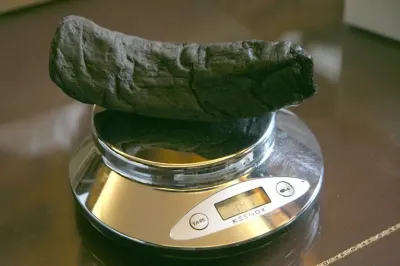
 Herculaneum - A team of student researchers has made a giant contribution to solving one of the biggest mysteries in archaeology by revealing the content of Greek writing inside a charred scroll buried 2,000 years ago by the eruption of Mount Vesuvius. The winners of a contest called the Vesuvius Challenge trained their machine-learning algorithms on scans of the rolled-up papyrus, unveiling a previously unknown philosophical work that discusses senses and pleasure. The feat paves the way for artificial intelligence (AI) techniques to soon decipher the rest of the scrolls in their entirety, which researchers say could have revolutionary implications for our understanding of the ancient world. The newly revealed text discusses sources of pleasure including music, the taste of capers and the colour purple. The scroll is one of hundreds of intact papyri excavated in the 18th century from a luxury Roman villa in Herculaneum, Italy. These lumps of carbonized ash — known as the Herculaneum scrolls — are the only library that survives from the ancient world, but are too fragile to open. The winning entry, announced on 5 February, reveals hundreds of words across more than 15 columns of text, corresponding to around 5% of an entire scroll. The content of most of the previously opened Herculaneum scrolls relates to the Epicurean school of philosophy, and seems to have formed the working library of a follower of the Athenian philosopher Epicurus named Philodemus. The new text doesn’t name the author but from a rough first read, say Fowler and Nicolardi, it is probably also by Philodemus. As well as pleasurable tastes and sights, it includes a figure called Xenophantus, possibly a flute-player of that name mentioned by the ancient authors Seneca and Plutarch, whose evocative playing apparently caused Alexander the Great to reach for his weapons. Lapatin says the topics discussed by Philodemus, and his predecessor Epicurus, are still relevant today. “The basic questions Epicurus was asking are the ones that face us all as humans. How do we live a good life? How do we avoid pain?” But “the real gains are still ahead of us,” he says. “What’s so exciting to me is less what this scroll says, but that the decipherment of this scroll bodes well for the decipherment of the hundreds of scrolls that we had previously given up on.”
Herculaneum - A team of student researchers has made a giant contribution to solving one of the biggest mysteries in archaeology by revealing the content of Greek writing inside a charred scroll buried 2,000 years ago by the eruption of Mount Vesuvius. The winners of a contest called the Vesuvius Challenge trained their machine-learning algorithms on scans of the rolled-up papyrus, unveiling a previously unknown philosophical work that discusses senses and pleasure. The feat paves the way for artificial intelligence (AI) techniques to soon decipher the rest of the scrolls in their entirety, which researchers say could have revolutionary implications for our understanding of the ancient world. The newly revealed text discusses sources of pleasure including music, the taste of capers and the colour purple. The scroll is one of hundreds of intact papyri excavated in the 18th century from a luxury Roman villa in Herculaneum, Italy. These lumps of carbonized ash — known as the Herculaneum scrolls — are the only library that survives from the ancient world, but are too fragile to open. The winning entry, announced on 5 February, reveals hundreds of words across more than 15 columns of text, corresponding to around 5% of an entire scroll. The content of most of the previously opened Herculaneum scrolls relates to the Epicurean school of philosophy, and seems to have formed the working library of a follower of the Athenian philosopher Epicurus named Philodemus. The new text doesn’t name the author but from a rough first read, say Fowler and Nicolardi, it is probably also by Philodemus. As well as pleasurable tastes and sights, it includes a figure called Xenophantus, possibly a flute-player of that name mentioned by the ancient authors Seneca and Plutarch, whose evocative playing apparently caused Alexander the Great to reach for his weapons. Lapatin says the topics discussed by Philodemus, and his predecessor Epicurus, are still relevant today. “The basic questions Epicurus was asking are the ones that face us all as humans. How do we live a good life? How do we avoid pain?” But “the real gains are still ahead of us,” he says. “What’s so exciting to me is less what this scroll says, but that the decipherment of this scroll bodes well for the decipherment of the hundreds of scrolls that we had previously given up on.”
https://www.nature.com/articles/d41586-024-00346-8
ANGLETERRE – 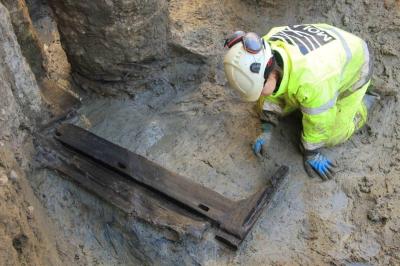
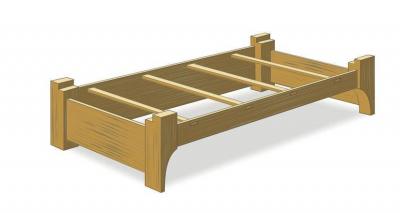 Londres - Archaeologists excavating a construction site in London have unearthed the first Roman “flat-packed” funerary furniture – a fully intact Roman funerary bed -, skeletal remains, and five oak coffins ever found in Britain. In 47 AD, the Romans founded London as Londinium and later built a bridge across the Thames. The settlement served as an important port, with roads connecting to other Roman outposts in Britain. Representing a national “first”, the Roman funerary bed was found alongside five oak coffins, adding to a collection of only three Roman wooden coffins ever found in London. Archaeologists from the Museum of London Archaeology (MOLA) uncovered the first complete funerary bed to be found in the UK, an object experts have likened to “flat-packed furniture” which would have been used to carry the deceased to the grave. Roman artworks often show the spirits of the dead lounging on these beds, sipping wine, and eating grapes. Such furnishings would have been buried with the dead, for them to use in the next life. The funerary bed has carefully carved feet. Meanwhile, the joints were secured with small wooden pegs, and analysis revealed that the artifact was made of “high-quality oak.” Evidence suggests that the bed was disassembled before being placed in the 20 or 30-year-old Roman man’s grave. The oak bed was found remarkably well preserved by mud of the now subterranean River Fleet which runs beneath the streets of central London.
Londres - Archaeologists excavating a construction site in London have unearthed the first Roman “flat-packed” funerary furniture – a fully intact Roman funerary bed -, skeletal remains, and five oak coffins ever found in Britain. In 47 AD, the Romans founded London as Londinium and later built a bridge across the Thames. The settlement served as an important port, with roads connecting to other Roman outposts in Britain. Representing a national “first”, the Roman funerary bed was found alongside five oak coffins, adding to a collection of only three Roman wooden coffins ever found in London. Archaeologists from the Museum of London Archaeology (MOLA) uncovered the first complete funerary bed to be found in the UK, an object experts have likened to “flat-packed furniture” which would have been used to carry the deceased to the grave. Roman artworks often show the spirits of the dead lounging on these beds, sipping wine, and eating grapes. Such furnishings would have been buried with the dead, for them to use in the next life. The funerary bed has carefully carved feet. Meanwhile, the joints were secured with small wooden pegs, and analysis revealed that the artifact was made of “high-quality oak.” Evidence suggests that the bed was disassembled before being placed in the 20 or 30-year-old Roman man’s grave. The oak bed was found remarkably well preserved by mud of the now subterranean River Fleet which runs beneath the streets of central London.
USA – 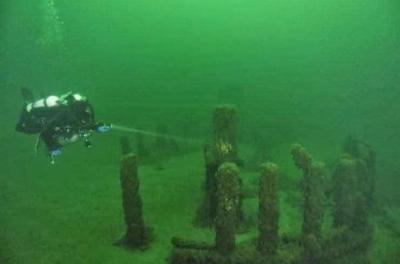
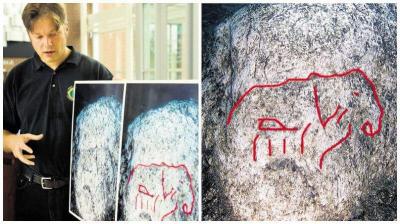
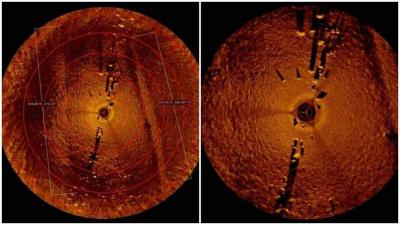 Michigan - A prehistoric structure has been uncovered in Grand Traverse Bay, an arm of Lake Michigan on the western shore of Michigan’s Lower Peninsula. When archaeologists were searching for shipwrecks under Lake Michigan, they discovered a rock with a prehistoric carving of a mastodon, as well as a collection of stones arranged in a Stonehenge-like manner. About forty feet beneath Lake Michigan’s glowing waters, Dr. Holley discovered stones arranged in a long line, over one mile in length. The stones have been dated to approximately 9,000 years ago. That was 4,000 years before Stonehenge was built and approximately two thousand years after the Ice Age ended. It occurred when the lake bed was dry and before Grand Traverse Bay existed. It should be clearly understood that this is not a megalith site like Stonehenge. This label has been placed on the site by individuals in the press who may have been attempting to generate sensation about the story and have not visited the site. The site in Grand Traverse Bay is best described as a long line of stones which is over a mile in length,” Dr. Holley said. It is, however, not the only strange prehistoric submerged site in this region. While exploring Lake Huron, one of North America’s five Great Lakes, underwater archaeologists discovered traces of an ancient lost civilization that is twice as old as Stonehenge and Egypt’s Great Pyramids. Dr. John O’Shea from the University of Michigan has been working on a broadly similar structure over in Lake Huron. He through a leap of innovative thinking, concluded that the structure was perfect for caribou hunting corridors. According to reports, underwater archaeologists have discovered what appears to be a dry land corridor that once connected northeast Michigan and southern Ontario. Scientists say the main feature, known as Drop 45 Drive Lane, is the most complex hunting structure discovered beneath the Great Lakes to date. The 9,000-year-old limestone structure consists of two parallel lines of stones that lead to a cul-de-sac lined with natural cobblestones. If the findings are correct, the hunting complex would be twice as old as Stonehenge. It is highly possible that the site in Grand Traverse Bay may have served a similar function to the one found in Lake Huron.
Michigan - A prehistoric structure has been uncovered in Grand Traverse Bay, an arm of Lake Michigan on the western shore of Michigan’s Lower Peninsula. When archaeologists were searching for shipwrecks under Lake Michigan, they discovered a rock with a prehistoric carving of a mastodon, as well as a collection of stones arranged in a Stonehenge-like manner. About forty feet beneath Lake Michigan’s glowing waters, Dr. Holley discovered stones arranged in a long line, over one mile in length. The stones have been dated to approximately 9,000 years ago. That was 4,000 years before Stonehenge was built and approximately two thousand years after the Ice Age ended. It occurred when the lake bed was dry and before Grand Traverse Bay existed. It should be clearly understood that this is not a megalith site like Stonehenge. This label has been placed on the site by individuals in the press who may have been attempting to generate sensation about the story and have not visited the site. The site in Grand Traverse Bay is best described as a long line of stones which is over a mile in length,” Dr. Holley said. It is, however, not the only strange prehistoric submerged site in this region. While exploring Lake Huron, one of North America’s five Great Lakes, underwater archaeologists discovered traces of an ancient lost civilization that is twice as old as Stonehenge and Egypt’s Great Pyramids. Dr. John O’Shea from the University of Michigan has been working on a broadly similar structure over in Lake Huron. He through a leap of innovative thinking, concluded that the structure was perfect for caribou hunting corridors. According to reports, underwater archaeologists have discovered what appears to be a dry land corridor that once connected northeast Michigan and southern Ontario. Scientists say the main feature, known as Drop 45 Drive Lane, is the most complex hunting structure discovered beneath the Great Lakes to date. The 9,000-year-old limestone structure consists of two parallel lines of stones that lead to a cul-de-sac lined with natural cobblestones. If the findings are correct, the hunting complex would be twice as old as Stonehenge. It is highly possible that the site in Grand Traverse Bay may have served a similar function to the one found in Lake Huron.
https://arkeonews.net/the-mysterious-prehistoric-underwater-structure-beneath-lake-michigan/
BRESIL –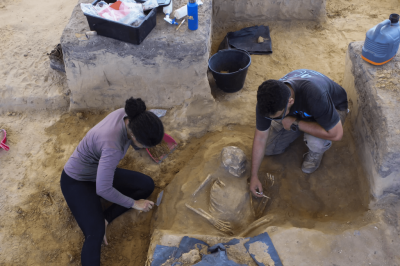 Sao Luis - Archaeologists unearthed 43 human skeletons and more than 100,000 artifacts at an excavation site in the coastal city of São Luís in northeastern Brazil. Scientists have long debated precisely when and how humans arrived in and populated the Americas from Asia. The archaeological site is much older than the oldest documented “pre-sambaqui” settlement found so far in the region, dating back 6,600 years. The findings suggest that people settled in this part of modern-day Brazil at least 1,400 years earlier than previously thought. However, the artifacts have only been dated based on their depth, and confirmatory isotopic analysis has yet to be performed. The archaeological site was found when a team of construction workers came across human bones and pottery shards . The upper archaeological layer at the site contained numerous Tupinamba artifacts, which belonged to one of the various Tupi ethnic groups that lived in present-day Brazil before being conquered by Portuguese colonial settlers in the early seventeenth century. The team discovered Amazonian artifacts beneath the top layer, followed by a “sambaqui mound,” which was made up of discarded bones, shells, and pottery. It was beneath this mound, at around two meters (6.5 ft) deep, ceramics were found dating to “8,000 to 9,000 years old.” This early date precedes the previous oldest mound in the region, which Lage told AFP reporters, “dates to 6,600 years ago.”
Sao Luis - Archaeologists unearthed 43 human skeletons and more than 100,000 artifacts at an excavation site in the coastal city of São Luís in northeastern Brazil. Scientists have long debated precisely when and how humans arrived in and populated the Americas from Asia. The archaeological site is much older than the oldest documented “pre-sambaqui” settlement found so far in the region, dating back 6,600 years. The findings suggest that people settled in this part of modern-day Brazil at least 1,400 years earlier than previously thought. However, the artifacts have only been dated based on their depth, and confirmatory isotopic analysis has yet to be performed. The archaeological site was found when a team of construction workers came across human bones and pottery shards . The upper archaeological layer at the site contained numerous Tupinamba artifacts, which belonged to one of the various Tupi ethnic groups that lived in present-day Brazil before being conquered by Portuguese colonial settlers in the early seventeenth century. The team discovered Amazonian artifacts beneath the top layer, followed by a “sambaqui mound,” which was made up of discarded bones, shells, and pottery. It was beneath this mound, at around two meters (6.5 ft) deep, ceramics were found dating to “8,000 to 9,000 years old.” This early date precedes the previous oldest mound in the region, which Lage told AFP reporters, “dates to 6,600 years ago.”
ITALIE – 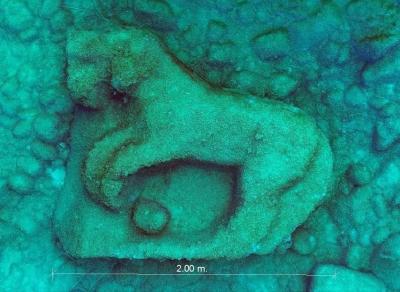 Agrigente - A large marble relief believed to have been part of the Temple of Olympian Zeus frieze in Agrigento, Sicily, has been recovered from the seabed off the coast of San Leone, not far from the mouth of the Akragas River. The find recovered is most likely a marble frontal decoration belonging to the famous Temple: the fragment depicts a prancing horse, an iconic element in artistic representations of the Greek period. Covered with concretions, the find, almost certainly made of Proconnesian marble, measuring 2 meters by 1.6 meters and 35 cm thick, lay about 300 meters from the coast, at a depth of 9 meters, although this piece was already generically cataloged in the area. Under the direction of engineer Gaetano Lino, the BC Sicily Subgroup discovered the element’s potential in October through photogrammetric studies. They successfully rescued the fragment today after informing the authorities and overcoming meteorological challenges. Its study will provide new insights into this grand construction from the 5th century BC. ,The Temple of Zeus was erected by the tyrant Theron, ruler of the Greek colony of Acragas (now known as Agrigento) and a large part of Western Sicily. He built the temple after his victory in the Battle of Himera in 480 B.C., for its proportions, were one of largest of antiquity.
Agrigente - A large marble relief believed to have been part of the Temple of Olympian Zeus frieze in Agrigento, Sicily, has been recovered from the seabed off the coast of San Leone, not far from the mouth of the Akragas River. The find recovered is most likely a marble frontal decoration belonging to the famous Temple: the fragment depicts a prancing horse, an iconic element in artistic representations of the Greek period. Covered with concretions, the find, almost certainly made of Proconnesian marble, measuring 2 meters by 1.6 meters and 35 cm thick, lay about 300 meters from the coast, at a depth of 9 meters, although this piece was already generically cataloged in the area. Under the direction of engineer Gaetano Lino, the BC Sicily Subgroup discovered the element’s potential in October through photogrammetric studies. They successfully rescued the fragment today after informing the authorities and overcoming meteorological challenges. Its study will provide new insights into this grand construction from the 5th century BC. ,The Temple of Zeus was erected by the tyrant Theron, ruler of the Greek colony of Acragas (now known as Agrigento) and a large part of Western Sicily. He built the temple after his victory in the Battle of Himera in 480 B.C., for its proportions, were one of largest of antiquity.
CHINE – 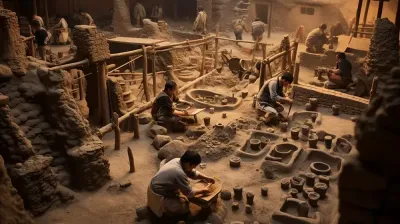 Hangzhou - Two archaeological sites have been unearthed in the city of Hangzhou, the capital of east China's Zhejiang Province, shedding light on stone processing dating back to the Liangzhu civilization around 5,000 years ago, according to a meeting on the province's archaeological work that concluded. This was reported by The Xinhua News Agency. The two relic sites are the Shenjiali relic site in the city's Xiaoshan District and the Shenjiafan relic site in Tonglu County. The Shenjiali relic site, spanning approximately 15,000 square meters with an excavated area of 325 square meters, revealed the remains of a sophisticated stone processing plant from the Liangzhu culture, where archaeologists uncovered tens of thousands of stone processing by-products. "The Shenjiali site is close to mountains, where stonemasons had direct access to extract stones. These artisans held high standards, evident in the archaeological findings that showcase many well-executed semifinished stone grinding artifacts", – said Li Wei, associate researcher of the Department of Cultural Heritage and Museology at Fudan University. The Shenjiafan site, covering around 40,000 square meters with an excavated area of 1,500 square meters, has revealed over 200 sites, including ash pits, tombs, column pits, and stone hedges. The excavation has also yielded 37,000 relics, predominantly stone products from the Liangzhu civilization. "These artifacts encompass various stages of stoneware alongside raw materials and tools", – said Guan Xinyu, the site's executive leader, adding that the site once functioned as a sizable stone processing area. "The new findings not only provide archaeological evidence for understanding the origin of stone tools in the Liangzhu civilization but also contribute to the overall analysis and research of the production and circulation of stone tools within this ancient civilization", – said Wang Ningyuan, an expert at the Zhejiang provincial institute of cultural relics and archaeology.
Hangzhou - Two archaeological sites have been unearthed in the city of Hangzhou, the capital of east China's Zhejiang Province, shedding light on stone processing dating back to the Liangzhu civilization around 5,000 years ago, according to a meeting on the province's archaeological work that concluded. This was reported by The Xinhua News Agency. The two relic sites are the Shenjiali relic site in the city's Xiaoshan District and the Shenjiafan relic site in Tonglu County. The Shenjiali relic site, spanning approximately 15,000 square meters with an excavated area of 325 square meters, revealed the remains of a sophisticated stone processing plant from the Liangzhu culture, where archaeologists uncovered tens of thousands of stone processing by-products. "The Shenjiali site is close to mountains, where stonemasons had direct access to extract stones. These artisans held high standards, evident in the archaeological findings that showcase many well-executed semifinished stone grinding artifacts", – said Li Wei, associate researcher of the Department of Cultural Heritage and Museology at Fudan University. The Shenjiafan site, covering around 40,000 square meters with an excavated area of 1,500 square meters, has revealed over 200 sites, including ash pits, tombs, column pits, and stone hedges. The excavation has also yielded 37,000 relics, predominantly stone products from the Liangzhu civilization. "These artifacts encompass various stages of stoneware alongside raw materials and tools", – said Guan Xinyu, the site's executive leader, adding that the site once functioned as a sizable stone processing area. "The new findings not only provide archaeological evidence for understanding the origin of stone tools in the Liangzhu civilization but also contribute to the overall analysis and research of the production and circulation of stone tools within this ancient civilization", – said Wang Ningyuan, an expert at the Zhejiang provincial institute of cultural relics and archaeology.
ANGLETERRE – 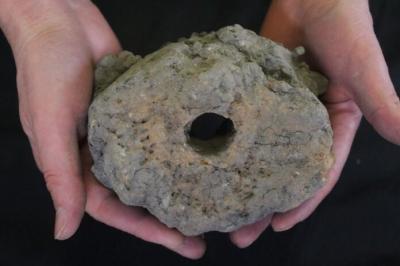 Wittenham Clumps - A routine planning application in Britain ended up uncovering the remains of an ancient British blacksmith’s workshop that has so far yielded 10,000 artifacts demonstrating the breadth of ironworking ongoing during Pre-Roman England.Located in Wittenham Clumps, Oxfordshire, the workshop, or smithy, was likely the abode of a master of the craft, as evidence shows extensive material and tool use that indicates complex pieces such as swords and large cartwheels. Radiocarbon dating puts the smithy as being established at around 771 BCE, with the last date of organic material coming in 515 BCE; mere decades after ironworking first arose in Britain. The discovery includes not only the remains of the building, but also the lining of the forge, and evidence of other key elements like an intact tuyere, or a metal tube used to blow air into the furnace. “It’s exceptionally rare to find a complete tuyere, especially one that’s as old as this,” said Gerry McDonnell, the archaeometallurgical specialist who examined the finds. “Although there are examples from later periods, including Saxon, Viking-age, and medieval pieces, this is one of the only known Iron Age ones in the country, if not Europe. The fact that it dates not just to the Iron Age, but to the first few centuries of ironworking in Britain, is remarkable.” “What’s more, the size of it suggests we’re looking at a hearth that was much larger and more specialized than that of your average village smithy,” he continued. Iron was far more plentiful than the materials needed to make bronze, and once the techniques for discovering and smelting it were diffused throughout England, it’s clear from the site that mastery was attained quickly among the population’s craftsmen. The vast majority of artifacts produced in the Iron Age weren’t very big and could be produced with quite a small hearth, while larger hearths would have taken much more skill and resources to control, said the researchers. “The only reason a blacksmith would need a bigger hearth would be if they were forging something long like swords or trade bars, or big, like, cartwheels. The fact that this early Iron Age smithy had a specialist tuyere shows us this was much more likely to have been a serious operation by a highly-skilled, master blacksmith,” explains McDonnell.
Wittenham Clumps - A routine planning application in Britain ended up uncovering the remains of an ancient British blacksmith’s workshop that has so far yielded 10,000 artifacts demonstrating the breadth of ironworking ongoing during Pre-Roman England.Located in Wittenham Clumps, Oxfordshire, the workshop, or smithy, was likely the abode of a master of the craft, as evidence shows extensive material and tool use that indicates complex pieces such as swords and large cartwheels. Radiocarbon dating puts the smithy as being established at around 771 BCE, with the last date of organic material coming in 515 BCE; mere decades after ironworking first arose in Britain. The discovery includes not only the remains of the building, but also the lining of the forge, and evidence of other key elements like an intact tuyere, or a metal tube used to blow air into the furnace. “It’s exceptionally rare to find a complete tuyere, especially one that’s as old as this,” said Gerry McDonnell, the archaeometallurgical specialist who examined the finds. “Although there are examples from later periods, including Saxon, Viking-age, and medieval pieces, this is one of the only known Iron Age ones in the country, if not Europe. The fact that it dates not just to the Iron Age, but to the first few centuries of ironworking in Britain, is remarkable.” “What’s more, the size of it suggests we’re looking at a hearth that was much larger and more specialized than that of your average village smithy,” he continued. Iron was far more plentiful than the materials needed to make bronze, and once the techniques for discovering and smelting it were diffused throughout England, it’s clear from the site that mastery was attained quickly among the population’s craftsmen. The vast majority of artifacts produced in the Iron Age weren’t very big and could be produced with quite a small hearth, while larger hearths would have taken much more skill and resources to control, said the researchers. “The only reason a blacksmith would need a bigger hearth would be if they were forging something long like swords or trade bars, or big, like, cartwheels. The fact that this early Iron Age smithy had a specialist tuyere shows us this was much more likely to have been a serious operation by a highly-skilled, master blacksmith,” explains McDonnell.
BANGLADESH –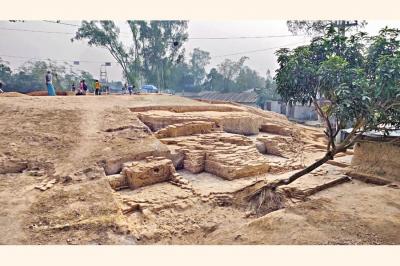 Raja Virat - The Department of Archeology has recently started an archaeological excavation for the first time in Raja Virat area of Gobindganj upazila of Gaibandha district. Nahid Sultana, regional director of the Rajshahi and Rangpur division at the Directorate of Archeology, was heading the excavation team. She said that the excavation team found a large piece of infrastructure. So far, fragments of terracotta, terracotta slabs, decorated bricks (usually used in the decoration of religious shrines) and foundation stone pillars have been found here. At present, the size of the mound is 50 metres by 35 metres and 4 metres high, says the excavation team. However, it was not possible to say exactly which period the artifacts belonged to and who lived here or whose kingdom it was unless the excavation was completed on a large scale, said Nahid Sultana. According to legend, there was an ancient fort city here. For the security of which there was a high wall and outside the wall was wide and deep. However, the current excavation team has so far found no trace of the ancient fort city. However, it is believed that there were two or three more temples connecting roads with the main infrastructure which is now almost destroyed.
Raja Virat - The Department of Archeology has recently started an archaeological excavation for the first time in Raja Virat area of Gobindganj upazila of Gaibandha district. Nahid Sultana, regional director of the Rajshahi and Rangpur division at the Directorate of Archeology, was heading the excavation team. She said that the excavation team found a large piece of infrastructure. So far, fragments of terracotta, terracotta slabs, decorated bricks (usually used in the decoration of religious shrines) and foundation stone pillars have been found here. At present, the size of the mound is 50 metres by 35 metres and 4 metres high, says the excavation team. However, it was not possible to say exactly which period the artifacts belonged to and who lived here or whose kingdom it was unless the excavation was completed on a large scale, said Nahid Sultana. According to legend, there was an ancient fort city here. For the security of which there was a high wall and outside the wall was wide and deep. However, the current excavation team has so far found no trace of the ancient fort city. However, it is believed that there were two or three more temples connecting roads with the main infrastructure which is now almost destroyed.
IRAN – 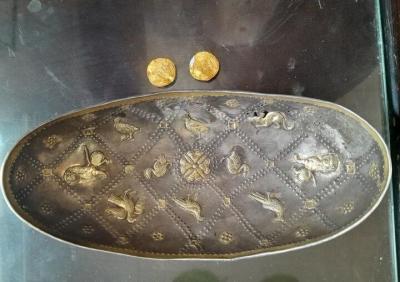 The Director of the Cultural Heritage, Tourism, and Handicrafts Department in Shirvan County made a significant announcement on Tuesday, revealing the discovery and confiscation of two gold coins and an egg-shaped historical vessel by law enforcement. During the announcement, Hamid Razaghi provided details, stating, “Two gold coins dating back to the Islamic period and a historical vessel from the Qajar era were unearthed and seized through collaborative efforts with law enforcement in Shirvan County.”
The Director of the Cultural Heritage, Tourism, and Handicrafts Department in Shirvan County made a significant announcement on Tuesday, revealing the discovery and confiscation of two gold coins and an egg-shaped historical vessel by law enforcement. During the announcement, Hamid Razaghi provided details, stating, “Two gold coins dating back to the Islamic period and a historical vessel from the Qajar era were unearthed and seized through collaborative efforts with law enforcement in Shirvan County.”
https://www.tehrantimes.com/news/494640/Historical-artifacts-discovered-in-North-Khorasan-province
CHINE – 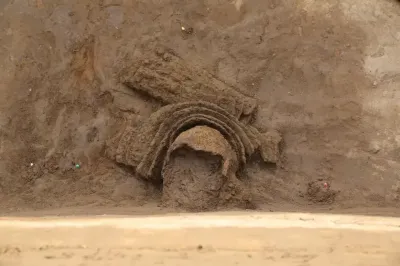 Yecheng - Archaeologists have discovered an ancient battlefield dating back to the Southern and Northern Dynasties (420-589) at the Yecheng historic site in north China's Hebei Province, according to the Yecheng archaeological team. This was reported by The Xinhua News Agency. Located in the city of Handan, the Yecheng historic site comprises two interconnected ancient city ruins and was once the capital of several ancient dynasties. Many ancient military artifacts, including armor and weapons, were unearthed during the excavation of the former moat outside the Zhuming Gate of the southern city ruins. Additionally, the remains of a bridge, including a brick-built load-bearing wall and evenly spaced pillar holes, were found. "This excavation has provided a preliminary understanding of the layout and structure of the moat and bridge, while providing new materials for researching the ceremonies and warfare centered around the gate", – said Shen Lihua, associate researcher at the Institute of Archaeology, Chinese Academy of Social Sciences. According to Shen, who is responsible for the excavation, the moat runs roughly parallel to the direction of the city wall. At the central axis of the gate, the water channel of the moat is slightly narrower, and the riverbank is steeper. A large amount of armor, bricks, tiles and ceramic fragments were unearthed from the sediment in the ancient moat.
Yecheng - Archaeologists have discovered an ancient battlefield dating back to the Southern and Northern Dynasties (420-589) at the Yecheng historic site in north China's Hebei Province, according to the Yecheng archaeological team. This was reported by The Xinhua News Agency. Located in the city of Handan, the Yecheng historic site comprises two interconnected ancient city ruins and was once the capital of several ancient dynasties. Many ancient military artifacts, including armor and weapons, were unearthed during the excavation of the former moat outside the Zhuming Gate of the southern city ruins. Additionally, the remains of a bridge, including a brick-built load-bearing wall and evenly spaced pillar holes, were found. "This excavation has provided a preliminary understanding of the layout and structure of the moat and bridge, while providing new materials for researching the ceremonies and warfare centered around the gate", – said Shen Lihua, associate researcher at the Institute of Archaeology, Chinese Academy of Social Sciences. According to Shen, who is responsible for the excavation, the moat runs roughly parallel to the direction of the city wall. At the central axis of the gate, the water channel of the moat is slightly narrower, and the riverbank is steeper. A large amount of armor, bricks, tiles and ceramic fragments were unearthed from the sediment in the ancient moat.
https://ukranews.com/en/news/979732-millennium-old-battlefield-site-discovered-in-china-s-hebei
